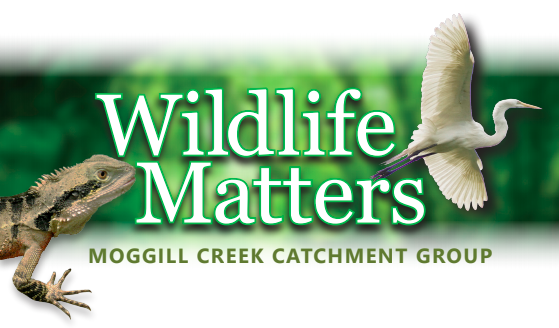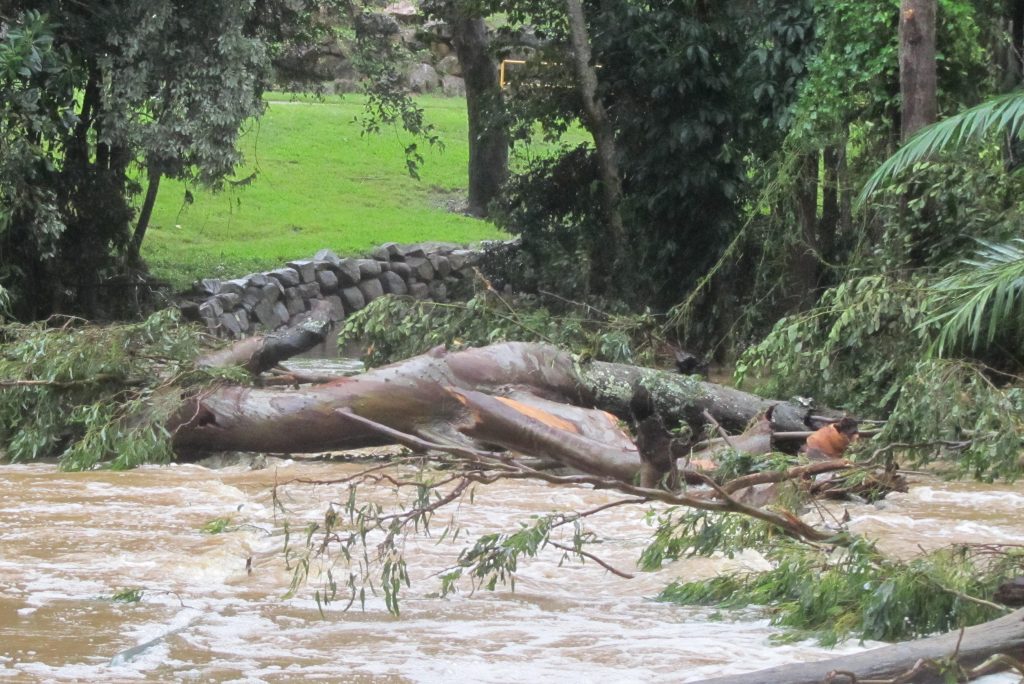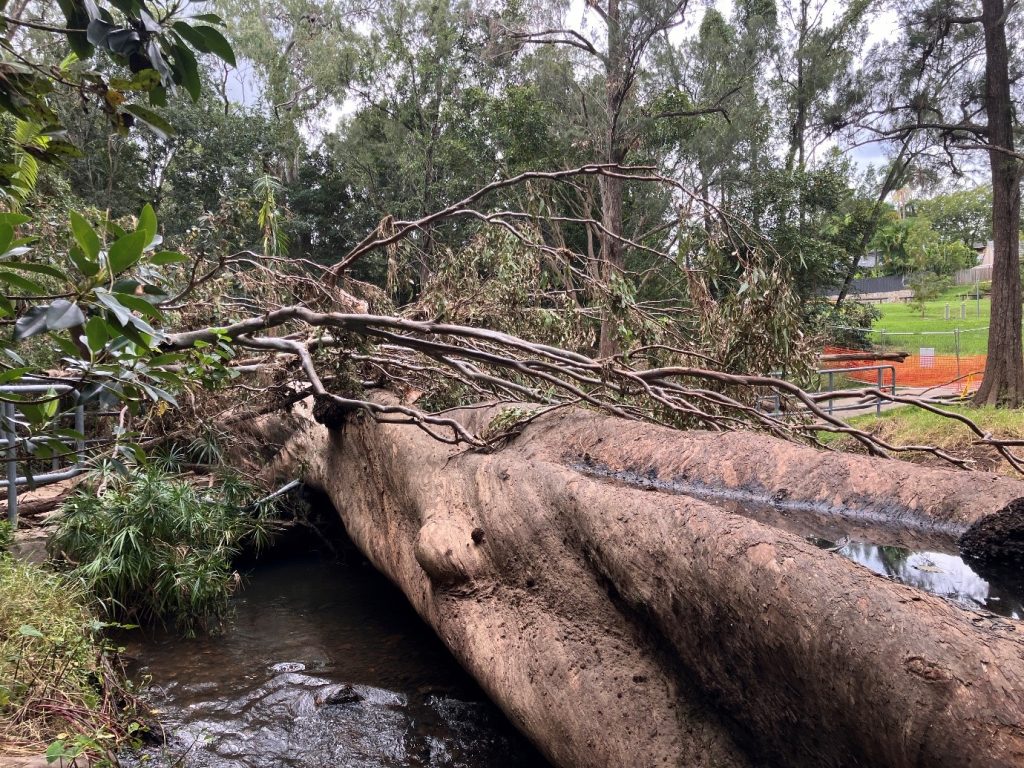It is with great sadness we report that the much celebrated and loved Queensland Blue Gum (or Forest Red Gum, Eucalyptus tereticornis) of the Creekside Street Park (situated between Creekside Street and Boyd Terrace) has fallen, after heavy rains and flooding in March 2025.
This enormous tree, with a trunk around 1.5m in diameter and a girth approaching 5m, has attracted admirers for many years, and was festooned with large hollows, a wild European beehive, as well as providing shelter and nectar for native bees and many other insects. Several mistletoes (of at least three species) were also present in its upper branches. Its passing is a loss to the catchment, as its habitat value was very high, with lorikeets and parrots nesting in its hollows, and was clearly much used by brushtail possums, as the numerous scratch marks on its trunk shows. No doubt many other hollow-dwelling animals made use of it as well. A tree of this size predates white settlement, and it can be clearly made out on some of the earliest aerial photography available in Brisbane (from 1946) and seems just as large then as today (see Brisbane City Plan 2014 mapping).
Queensland Blue Gum brought down by March 2025 flood – photo Jim Pope
The tree had fallen due to being undercut by recent floodwaters and its fall has also damaged the popular walking bridge beside it, a favourite for pedestrians, cyclists, and children wanting to explore the creek from a secure vantage point. Similar trees within Queensland are thought to be between 200 to 400 years old, so we have been truly lucky to have such a venerable specimen in our catchment. Such trees may weigh between 40 and 60 tonnes, so their biomass is impressive. Previously, Queensland Blue Gums were used in construction and housebuilding, and their durable timber (ironically) used for bridges.
Queensland Blue Gums are particularly desirable species for fauna, with koalas using the boughs for resting, and favouring their leaves for food. Their winter to spring-flowering season provides numerous nectar-feeding animals (such as migrating honeyeaters and flying foxes) with a significant source of nectar and is obviously also seasonally important for beekeepers. For this reason, some ecologists consider this tree a “keystone species” providing important or even essential habitat for some fauna at a local and regional level.
Main trunk blocking the creek crossing – photo Sandy Pollock
Why not honour this tree by planting a tubestock seedling in a large back paddock, or join one of the Moggill Creek Catchment Groups planting days? Its exciting to think that this might be the start of another streamside titan, to be admired and enjoyed by future generations
Sandy Pollock and Jim Pope
Wildlife Matters is published in: 




